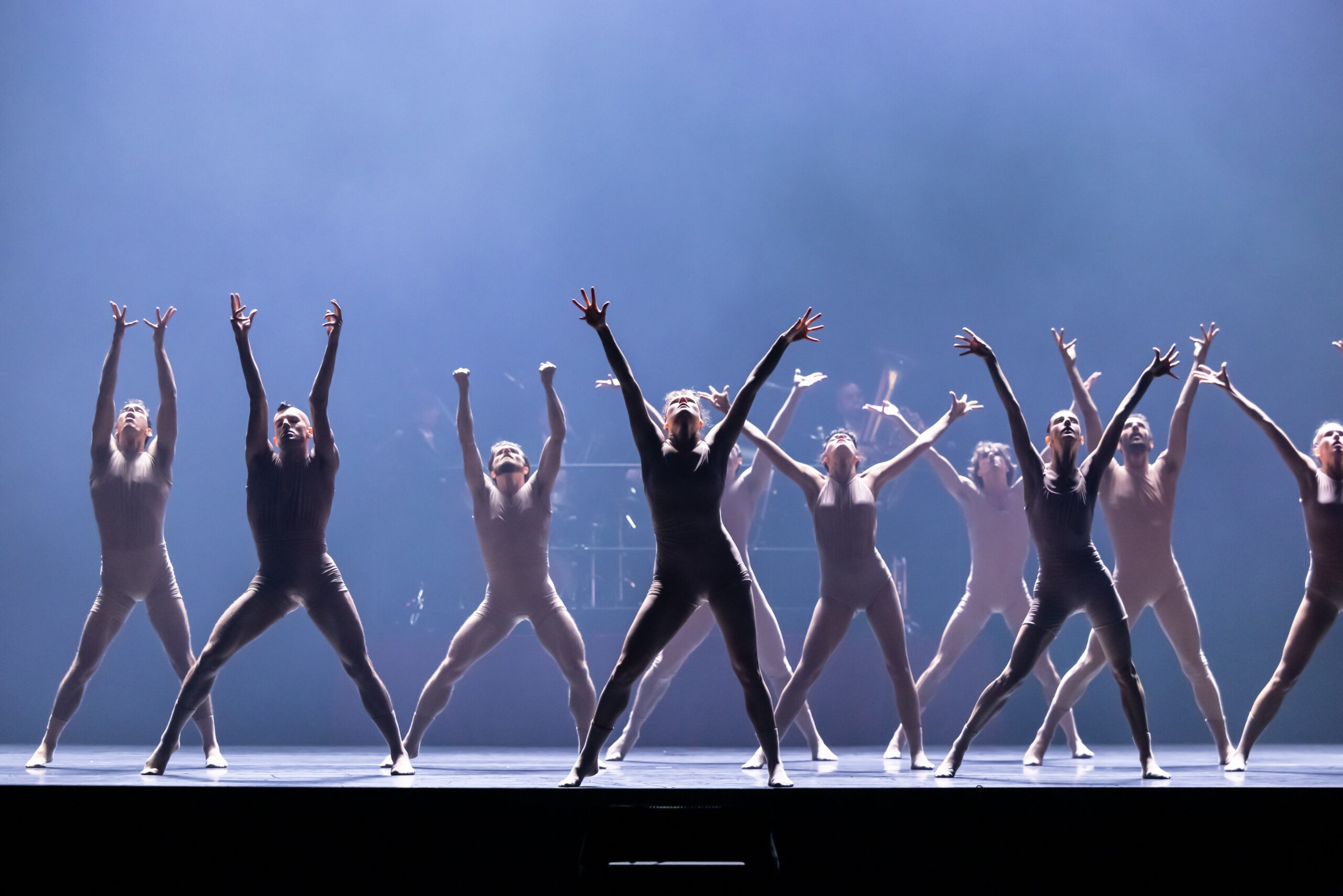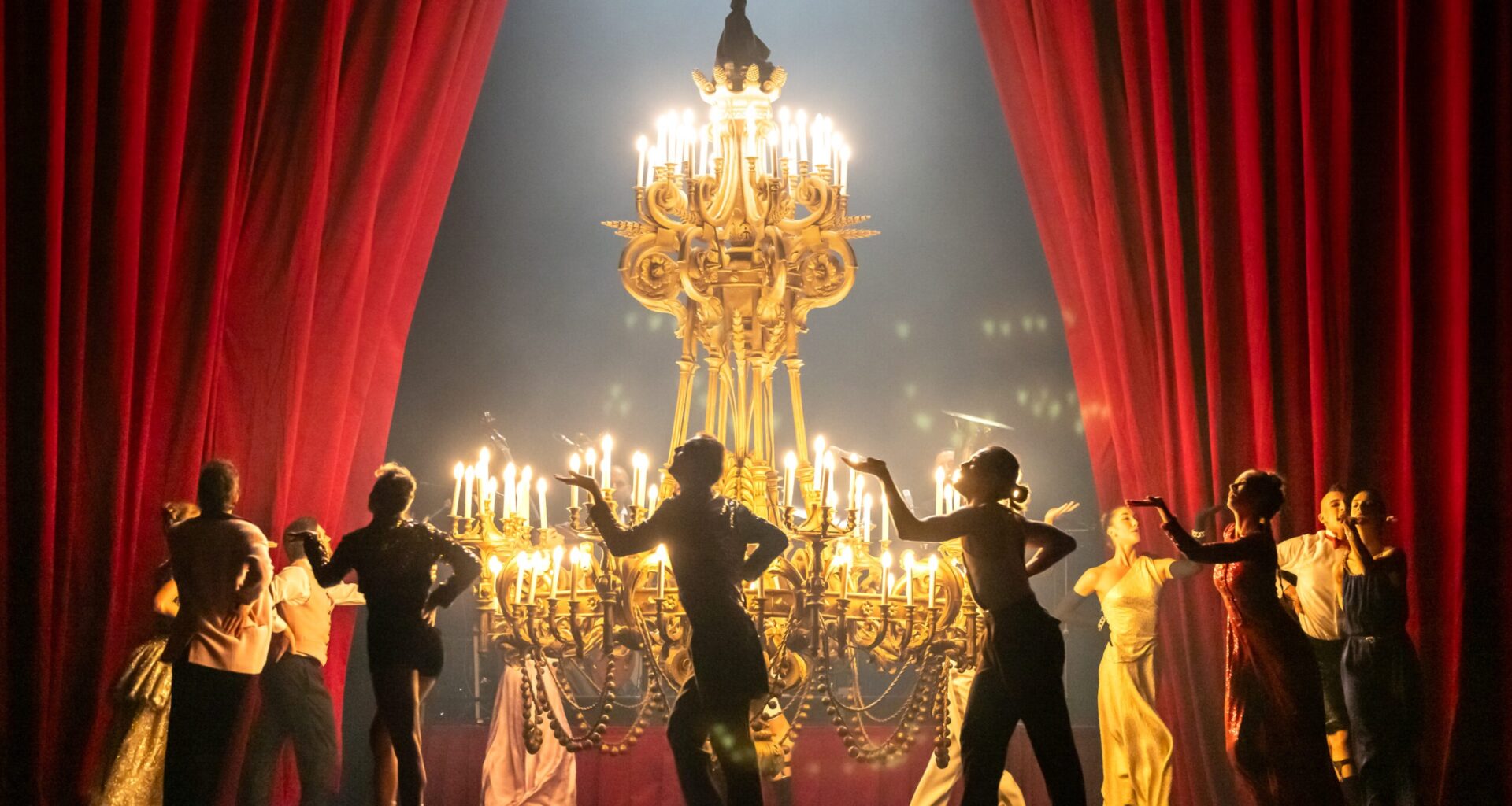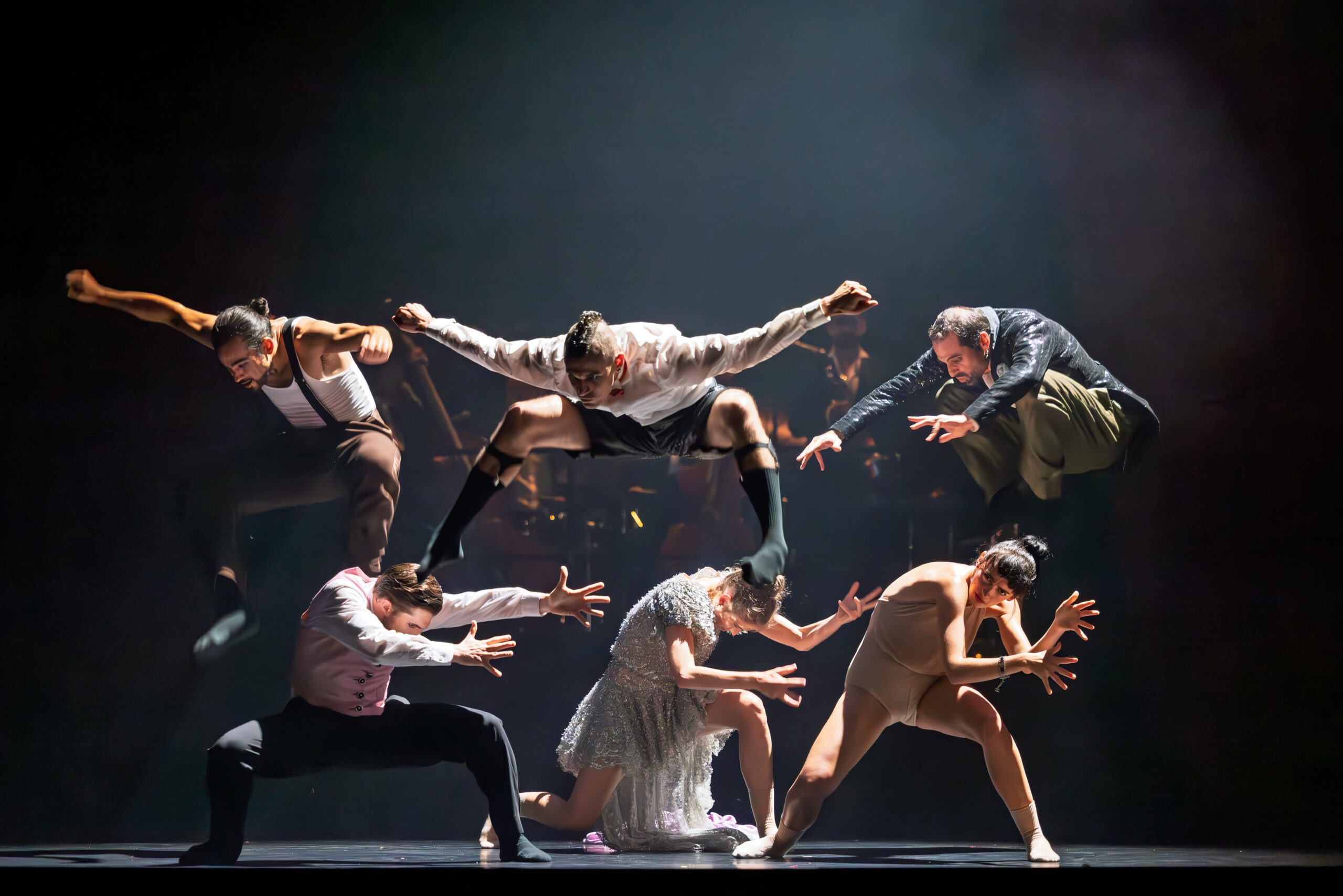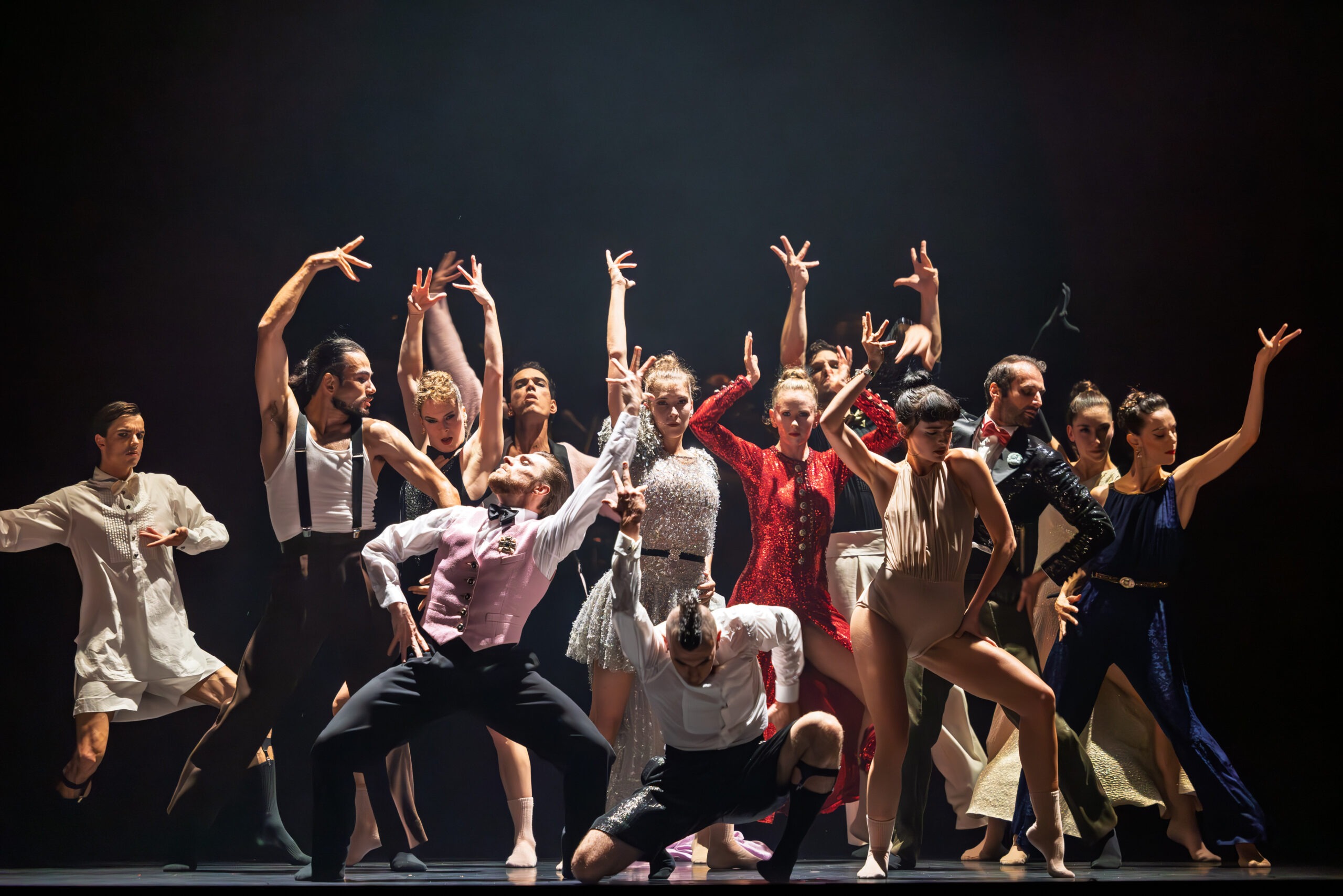Thick, red velvet curtains open. In the middle of the stage a small cluster of dancers, dressed in ballgowns and suspenders, evening gloves and waistcoats, is already in motion. More red velvet curtains part behind them, revealing another group of dancers bathed in the glow of a chandelier. A third set—the effect is almost comical at this point—pulls back to expose a live quartet elevated on a platform, the source of the thrumming, percussive score.
The opulent set is unmistakably Parisian: Chanel-designed costumes, a chandelier modeled after the seven-ton fixture that hangs in the Palais Garnier. And yet, something’s off. The dancers wear socks instead of pointe shoes. There’s not a tutu in sight. This is not the Paris Opera Ballet most audiences expect.
After nearly 25 years, France’s renowned classical ballet company returned to the Bay Area for the American premiere of “Red Carpet,” a new, full-length contemporary work. The company, which hasn’t visited the U.S. since 2012, opened its two-city tour with three shows at UC Berkeley’s Zellerbach Hall in early October, before jetting off to New York City Center for four more.
“So many people’s associations with the Paris Opera Ballet is with the classical story ballets, and that includes, of course, canonical pieces such as those by [George] Balanchine,” says Jeremy Geffen, executive and artistic director of Cal Performances. “This was a very special departure for them. And in a way, sort of a risk.”
This is one of the season-defining projects for us.
“Red Carpet,” choreographed and composed by Israel-born, London-based Hofesh Shechter, brings to life both the glamour and the grotesque of the high-society art world. The choreography shines in its athleticism, intricacy, and strangeness. At times undulating like snake-charmers or strutting in a fervent circle, the dancers move from rave-like gyrations into expansive, balletic leaps with what Geffen describes as “total mastery.” Laughing, he adds: “They all seemed to be having a great time, too.”
Shechter took inspiration from MTV, as well as theatres, nightclubs, and concert venues for “Red Carpet,” in his exploration of glamour in all its traditions—from pop culture to the Palais Garnier. “There is a type of grotesqueness to galas at the opera,” says Ballet Master Gregory Gaillard.
The company’s Berkeley visit had been in the works since last year, when Cal Performances learned of Shechter’s new project through a long-standing relationship with New York City Center and the Paris Opera Ballet. Despite knowing little about the work, and with the premiere date a year out, Geffen says Cal Performances, “grabbed onto it.” But bringing “Red Carpet” to life at Zellerbach was a technical challenge for the artistic and production staff.
“The sets aren’t enormous but they require incredible complexity,” he says. “There are several layers of curtains, the lighting is incredibly specific…every show has to be precise, but the queues with this were split second.”
Geffen acknowledges that “Red Carpet” may have thrown some ballet lovers “who wanted to see the Paris Opera Ballet perform something that was very canonical.” Still, this kind of work exemplifies exactly what he hopes to continue bringing to patrons of Cal Performances, and the overall response has been enthusiastic. As the artistic visionary, Geffen tries to curate a series that maintains a high calibre of both variety and quality—a good mix of the familiar and the surprising.
 Chris Hardy
Chris Hardy
“One should be so lucky as to be able to bring the Paris Opera Ballet every season, but if one did, that might actually rob the experience of its specialness,” he says. “This is one of the season-defining projects for us.”
Onstage, the mood begins to shift when one dancer pauses to remove her floor-length gown, revealing nude spandex underneath. Soon, all the other dancers join in, until the once-elegant opera-goers have become nothing more than a mass of (extremely talented) human bodies.
“In the end, all the glamour is stripped away,” Geffen says. In one particularly striking moment, a group of nude dancers clump together slow-walking under a pool of light with an ape-like slouch. One person collapses and is caught gently by many pairs of hands. It’s an obvious nod to vulnerability—a literal shedding of the costume and of individuality—but it lands. The performers receive a standing ovation.
Of course, Zellerbach isn’t quite the Palais Garnier—France’s premiere opera house—but Geffen says the dancers were excited to perform in a more modern venue. For many, if not most, this was the first major tour of their career. “One sensed backstage from the dancers the absolute elation they had of being able to show this,” Geffen says.
Geffen, and the company, was heartened to see how warm of a reception they received from the Berkeley audience. “Even in a darkened hall, performers feel that level of connection, and they can tell when an audience is engaged,” he adds. “I hear this over and over again from performers who come to our series that they feel embraced and empowered…This is a special place.”
So, might there be more visits from the Parisian ballerinas anytime soon?
“There is conversation and there is enthusiasm on both sides,” Geffen says cryptically. “I can’t give you an exact date, but I’m hoping that it will be within the next three years.”
Related


 Chris Hardy
Chris Hardy Chris Hardy
Chris Hardy